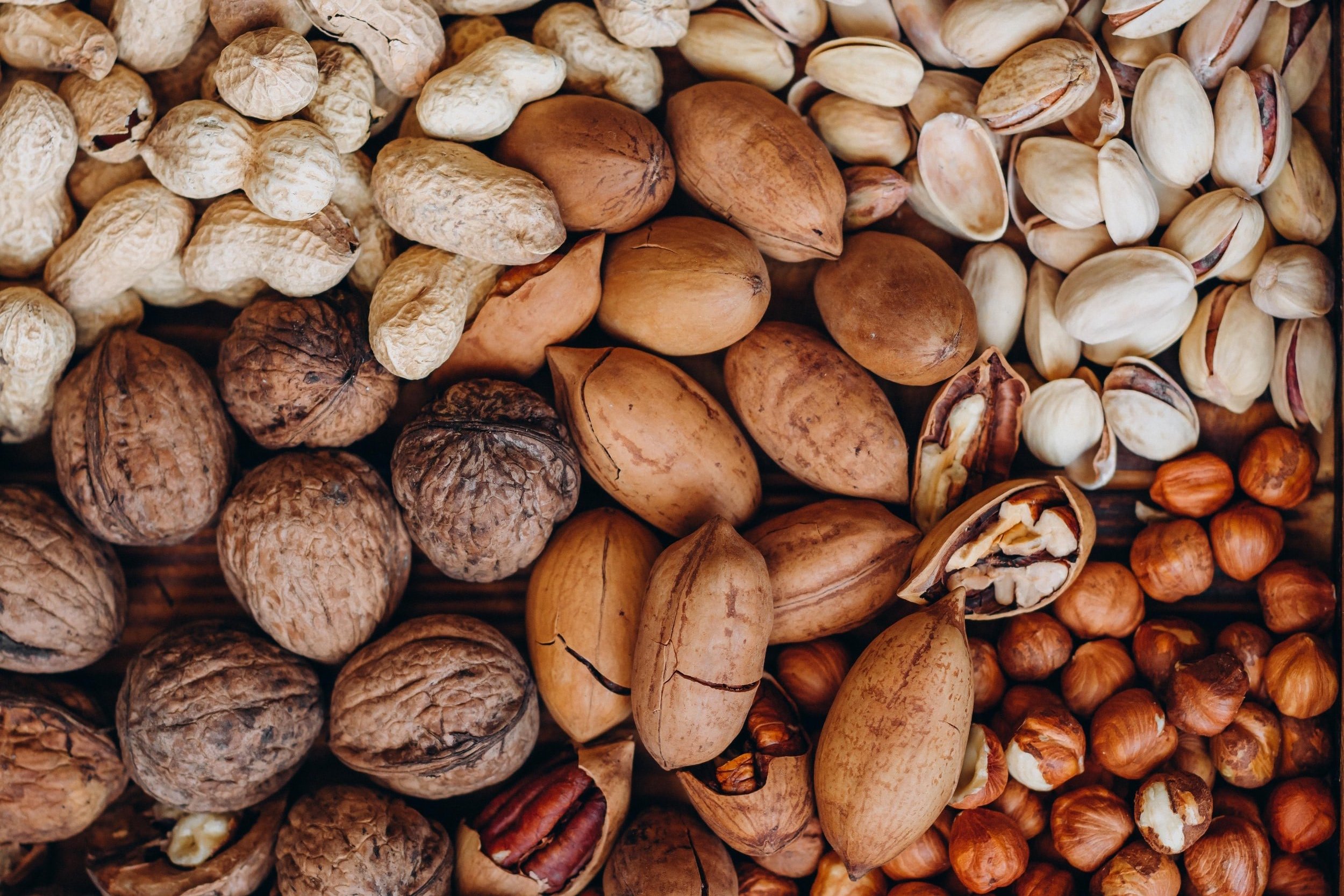
Fat
Dietary fat is found many recipes due to its unique characteristics of adding a rich and smooth consistency to the recipe to enhance the overall flavor and texture of that recipe. While dietary fat serves many benefits to a recipe’s flavor, some forms of dietary fat also serve many benefits to an individual’s health. This article will discuss the different types of dietary fat, their functions in the body, and end with sources and recommended daily intakes of dietary fat.
Fats have many important roles within the body (1). They are made up of hydrocarbon chains which consist of hydrogen and carbon molecules. These hydrocarbon chains then make up fatty acids of various lengths and structures. The two primary types of structures are classified as saturated or unsaturated. Saturated fatty acids only contain single bonds in their structure while unsaturated fatty contain one or more double bonds. An unsaturated fatty acid containing only one double bond is commonly called a monounsaturated fatty acid while an unsaturated fatty acid containing two or more double bonds is commonly called a polyunsaturated fatty acid. The structure of a fatty acid is important since saturated and unsaturated fatty acids have different functions within the body. For example, one study (2) reported that individuals on a polyunsaturated fatty acid-rich diet were able to better regulate hepatic fat accumulation, therefore increasing their health status. Like protein, there are two types of fatty acids that are essential in the diet which are omega-3 and omega-6 fatty acids. These fatty acids are both polyunsaturated fatty acids and play important roles within the body such as supporting proper growth and development as well as maintaining normal neurological and visual function.
Fat is stored in the body as triglycerides, which are three fatty acids attached to a glycerol backbone. Triglycerides can accumulate or be broken down depending on the energy needs of the individual. Another type of fat found within the body are phospholipids. Compared to triglycerides, phospholipids consist of only two fatty acids and a phosphorous group attached to a glycerol backbone. The main function of phospholipids is to increase the integrity of cell membranes (3). The two other types of fat are sphingolipids and sterols. Their roles consist of maintaining proper central nervous system function, being precursors of hormones, promoting proper absorption of nutrients – specifically fat-soluble vitamins. In summary, fat is vital for the proper functioning of the body due to its support summarized in the following list:
- Supply and store energy
- Increase integrity of cell membranes and organs
- Aid in neurological and visual functions
- Form cellular membranes, steroid hormones, bile acids, and signaling molecules
Much of the dietary fat sources comes from cooking oils that are used in restaurants, pre-prepared and packaged foods, and fried foods. Saturated fatty acid sources include butter, meat, and tropical oils like palm, coconut, and palm kernel oil. Monounsaturated fatty acid sources consist of oils such as olive, canola, peanut, safflower, sesame, and fish oils, avocados, nuts, fish, and animal fats. Polyunsaturated fatty acids can be found in products like fish, nuts and seeds, and oils like flax, sunflower, corn, soybean, safflower, and fish oils. The daily recommended intake of fat for individuals is 20 – 35% of total calories per day. For example, if you were consuming 2,000 calories per day, your intake of fat would range between 44 – 77 grams per day. Since a serving of fat is approximately the size of your thumb (4), you would need to consume 5 – 8 servings of fat per day.
Written by: Siri Pederson
Last edited: 05/11/2022
-
Hannon B, Thompson S, An R, Teran-Garcia M. Clinical outcomes of dietary replacement of saturated fatty acids with unsaturated fat sources in adults with overweight and obesity: A systematic review and meta-analysis of randomized control trials. Annals of Nutrition and Metabolism. 2017;71(1-2):107-117. doi:10.1159/000477216.
Ferramosca A, Zara V. Dietary fat and hepatic lipogenesis: Mitochondrial citrate carrier as a sensor of metabolic changes. Advances in Nutrition. 2014;5(3):217-225. doi:10.3945/an.113.004762.
Hac-Wydro K, Zajac A, Dynarowicz-Latka P. The influence of plant stanol on phospholipids monolayers - The effect of phospholipid structure. Journal of Colloid and Interface Science. 2011;360(2):681-689. doi:10.1016/j.jcis.2011.04.089.
Andrews R. Forget calorie counting. Precision Nutrition. https://www.precisionnutrition.com/ calorie-control-guide. Accessed April 18, 2022.







